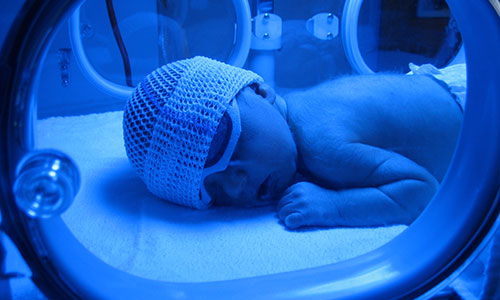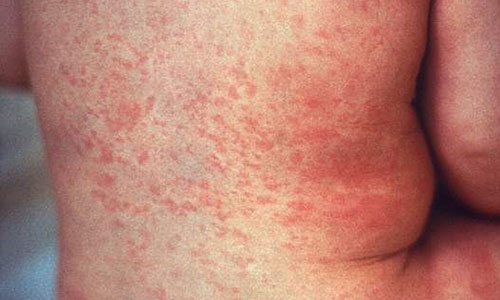Medicine
Medicine: applications of statistics, toxic orange juice, Sunlight and skin cancer, Rubella in pregnancy, random surgical operations.
Random surgical operations
An experiment is carried out at a Melbourne hospital. Patients who need a particular operation are wheeled into the operating theatre. Just before the surgeon makes the first cut, an envelope is opened which reveals to the surgical team whether they put valve type A or valve type B into the patient.

Whether the patient gets A or B is entirely random; the choice has been made by a random number generator on a computer (but it's just like tossing a coin).
Why is it done this way?
Is the surgeon a gambler who likes mixing business with pleasure? Are the patients all reckless risk takers? Is it all an elaborate practical joke?
Surprisingly (!), the answer is none of these. It is done because it removes bias in the allocation of patients to valve A or B.
Random allocation of patients to treatments usually sounds very strange to people who have never heard of it. The reason it is done is to get a fair comparison between the two treatments; in the example, valve A and valve B. If sicker patients tend to get allocated to valve A, then comparing the outcome of the two groups after the operation would not tell which valve was better. We usually know some of the reasons for better or worse outcomes, and we could try to ensure that the two groups were similar as far as those things go; these might be age, severity of condition, etc. But by randomizing, we make sure that, on average, both groups will be similar in all ways (even similar with respect to unknown influences on the outcome) except the thing we're really interested in: the two treatments.
Why doesn't anybody know which valve will be used until the last possible minute?
This certainly seems weird, doesn't it? The whole aim is to make the two treatment groups as similar as possible. Even if they're randomized it's still possible for biases to creep in. For example:
- The surgeon, anaesthetist and other theatre staff might make more careful preparations for the experimental valve;
- The surgeon might change his/her schedule to avoid giving one of the valves to a patient he/she was concerned about;
- and so on.
In general, it is desirable, if possible, for neither the patient nor the doctor to know which treatment the patient is allocated. This prevents any bias in the evaluation of the trial; the outcome for the patient is measured before anyone knows which group they were in. This is done in drug trials, where the two drugs can be made to look alike.
Obviously, with an operation, the surgeon has to know which procedure is being carried out!
How come they're experimenting on humans? Isn't that illegal?
Of course it would be illegal (and immoral) to experiment on humans in this way without their consent. These studies obtain informed consent from the subjects; but the subjects have to consent to being randomized. That is, they consent to their treatment being chosen by the flip of a coin.
The ethical justification for such a study is that we really don't know whether valve A or valve B is better. If we did, we could not reasonably withhold from the patient the better option.
Was it the orange juice?
When there is an episode of food poisoning affecting many people, careful recording of data and the application of statistical methods are often required to identify the source.

An example was the epidemic of food poisoning on domestic airline flights in Australia in August 1991. It was suggested that the orange juice was the problem. But was it? And how could you be sure? Suppose that nearly all of those who drank the orange juice got sick, and most of those did not drink it, stayed well. Does that prove it? What do you think?
The answer is no that evidence alone is insufficient. Importantly, the people who drank the orange juice may have also eaten the bread. You need to sort out all the foods and drinks consumed by passengers before you have a clear picture. To look at orange juice in particular, you need to ask the question: among people whose consumption of other food and drinks was identical, did the OJ drinkers get sicker than the non-OJ drinkers?
We need to consider another aspect of the evidence: if it was the orange juice, why didn't everyone who drank it get sick? We need to find out about the possible means of infection. Here good detective work depends on both the statistician and another expert.
Sunlight and skin cancer
The first convincing evidence of a link between exposure to sunlight and skin cancer was made by an Australian statistician, Oliver Lancaster.

He observed that the rate of skin cancer in Australia among Caucasians was strongly correlated with latitude, and hence with amount of sunlight; the northern states had higher rates than the southern ones. This was well before the hole in the ozone layer!
This observation was only possible by careful collection of data, and comparison of skin cancer rates.
Lancaster also made an important discovery about German measles and birth defects.
Reference:
Lancaster, H. O. (1956) Some geographical aspects of the mortality from melanoma in Europeans. Medical Journal of Australia , 1 : 1082-1087.
German measles and birth defects
The link between rubella (German measles) in pregnant women and birth defects in their babies was not an easy one to find, because the disease can be relatively mild.

After ophthalmologist Norman Gregg and others had suggested a link, the Australian statistician Oliver Lancaster was able to show that at the 1911, 1921 and 1933 Australian censuses there were peaks in the age distributions of deaf people, corresponding to a cohort born around 1899, when there was a known epidemic of rubella.
Lancaster also made an important discovery about sunlight and skin cancer.
Reference:
Lancaster, H. O. (1951) Deafness as an epidemic disease in Australia. British Medical Journal , 2 : 1429-1432.